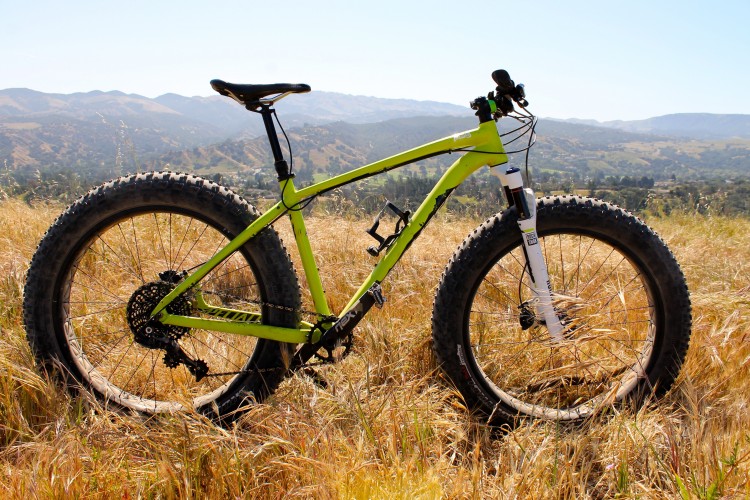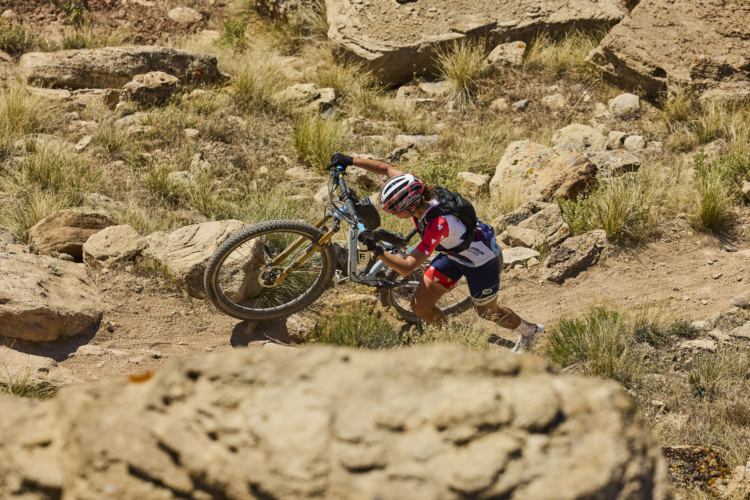
Smith’s Forefront helmet with its unique Aerocore construction (featuring Koroyd) has become one of the most recognizable and widely-used enduro helmets on the market today. And for good reason: the performance and protection is second to none, as Aaron confirmed in his review.
[see_also id=”192805″][/see_also]
The only problem? At $250 MSRP, the price of entry for that sweet, sweet Aerocore is steep. So, Smith decided to bring a little Koroyd goodness to a lower price point in the Rover helmet. The MSRP for this lid is $180 for the MIPS version and $150 for the non-MIPS version (more on that later).
If you sift through the marketing speak, Smith makes it sound like they left the Aerocore construction in the most critical impact zones and removed it elsewhere.
Out on the Trail
The first thing I noticed after rolling out of my driveway wearing the Smith Rover is that for some reason, I couldn’t see anything–the visor was completely blocking my vision. I turned around, went home, pulled the visor off, and headed back out–much better! However, the next thing I noticed was that the rim of the helmet pressed down on my favorite Oakley glasses. I checked in a mirror, and the Rover seemed to ride very far down on my forehead–so far, in fact, that I can only use the thinnest of glasses with this helmet. This is also why the visor blocked my vision–it was so low, and couldn’t be tilted up, that I simply had to take it off.
I thought that perhaps I had inadvertently gotten the wrong size helmet, so I triple checked my head size, and I fell smack dab in the middle of the measurements for the size-medium I was wearing. So, when I was back in Georgia riding with Aaron, we compared notes on our helmet fits. We concluded that the Smith helmets have a relatively deep head dome, and that my forehead isn’t nearly as tall as Aaron’s. Essentially, as far as I can tell this means that Smith helmets aren’t going to fit me well, but they could fit other riders better. So if you’re looking at the Rover, be sure to try before you buy.
Aside from my personal fit issues, the technical features of the Rover checked all the right boxes. While there are fewer vents on the Rover than the Forefront, the front scoops are truly massive, and visually larger than many other enduro helmets like the Bell Super. Bell claims they didn’t need massive front scoops because of their over brow ventilation. However, the Rover features similar over brow air channels to the Super, as well as massive scoops on top, which lead to well-sculpted overhead channels and big rear vents.
In short, Smith asks, “why not both?!”
This may be a small thing, but I found the straps and buckles to be of top-notch construction. Instead of having the webbing simply end in stitching (or nothing at all), Smith has attached rubberized pulls to make cinching down the straps a breeze, even with gloves on. The other fasteners were all easy to use with gloves as well–a small, but much-appreciated, design consideration.
In addition to loving the straps on this helmet, I found the dial system simple, and again, easy to use with gloves on.
No MIPS?
Finally, this brings us to the MIPS liner… or the lack thereof on my helmet model.
The Smith website lists the Rover as a “MIPS” helmet, but what they don’t mention, and I had to discover on BikeRadar, is that the Rover is available for $180 with MIPS, or $150 without. I’m glad I tracked that down, because I was beginning to lose my mind pulling the pads out of the Rover in search of a MIPS liner that simply was not there.
The main reason I was stoked to get the Rover in for review was because I don’t currently have a MIPS-equipped helmet in my lineup. At this point MIPS is old news, but it has been scientifically proven to reduce the severity of, or completely eliminate, concussions in the event of certain types of head trauma. It’s also been proven that cumulative concussions can cause chronic traumatic encephalopathy (CTE), which was recently linked to the depression and subsequent suicide of BMX legend Dave Mirra. Having personally suffered severe concussions in the past and having had doctors tell me that I CANNOT hit my head anymore, anything–anything!–that will help reduce the possibility of a concussion sounds like a good idea to me.
For more on CTE and brain injuries, be sure to read Michael Paul’s two-part feature about his friend, Mark Wilson.
[see_also id=”66674″][/see_also]
So let’s say you’re a consumer, and you say to yourself, “my old helmet has seen a few seasons of use, and I want to play it safe and replace it… you know, just in case.” At what point would you pick up the $150 non-MIPS Rover, compare it to the MIPS-Equipped Rover for $30 more, and say, “Nah, I’ve already spent $150, I can’t afford another $30 for increased protection against concussions”?
Seriously, what person would say that? Let me know in the comments if you think that a 20% increase in helmet price isn’t worth getting extra protection from brain injury, so I can shame you into spending more on your next helmet purchase.
At this point in time, I see no reason for a company to sell a non-MIPS-equipped version of the same helmet model if the only difference is $30 in price. And if $30 matters that much to you, you can save yourself $50 and still get MIPS by buying the MIPS-Equipped Scott Vivo Plus for $130.
If a rider is buying a Smith helmet–even the Rover, which is designed to be a more affordable version of the Forefront–searching for a bargain-basement price isn’t their main goal. So c’mon now: cut the crap, add the MIPS, and let’s keep people from life-altering accidents.
Bottom Line
My fit issues could totally be attributed to the shape of my head, so if you’re planning to buy a Smith lid, just be sure you try before you buy (sorry, online retailers). And if you think the Rover sounds like a good compromise between safety, performance, unique visual appeal, and cost savings, do yourself a favor: increase your budget by 20%, and buy the helmet that has a better chance of saving your life.
Thanks to Smith for providing the Rover for review.
















